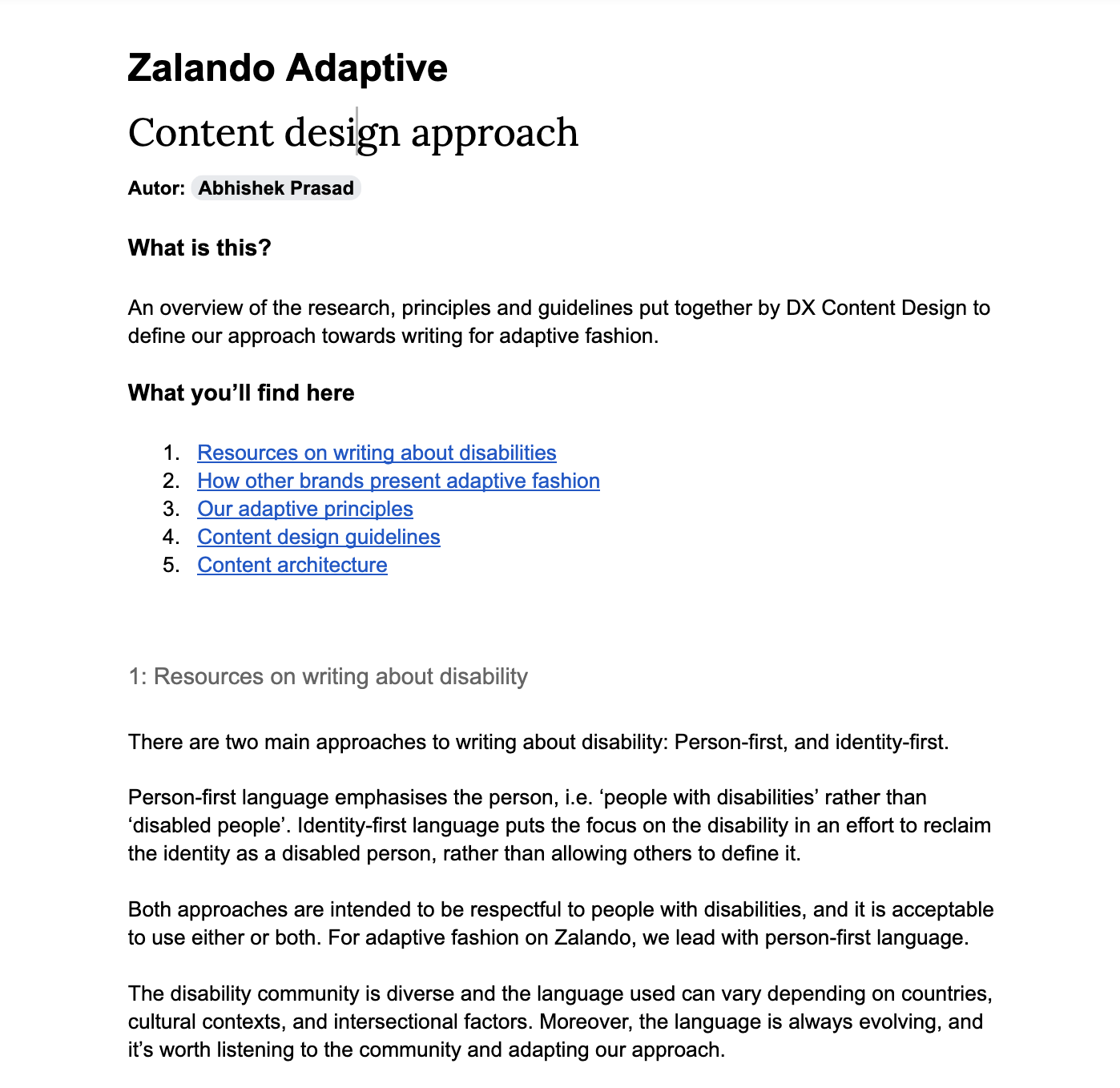ZALANDO ADAPTIVE
In 2023, 100 million Europeans were living with disabilities.
The fashion industry ignored them, and online shopping experiences weren’t designed for them.
Zalando wanted to change this.
Overview
Our challenge
Create an inclusive shopping experience for disabled people.
What I did
Identified user needs through research
Facilitated workshops to establish design principles
Created product proposition and architecture, including feature naming and benefit articulation
Mapped the UX content journey, including navigation, filters, and collection pages
Guided a junior writer to craft the product homepage
Led usability testing for prototypes, iterating with feedback
Compiled guidelines and standards for future iterations
Who I worked with
Customer research, external D&I consultants
Brand, design, and D&I leads
Product marketing
Product design and management
Engineering (web, iOS, Android)
UX research
Local markets (EU)
Our solution
Zalando Adaptive: an industry-leading example of inclusive design.
Fully integrated yet easy to discover and explore
Crafted with care for a joyful, welcoming experience
Designed to scale with new products, categories, and markets
Identifying user human problems
We started with research: talking to users, disabled-owned brands, and inclusion consultants, along with market and culture analysis.
It became clear that user problems went deeper than availability. Fashion for disabled people was hard to find, too focused on function, and lacking any joy.
With our findings, I co-led workshops with all stakeholders to define our guiding principles.
Defining the ‘what’
We had to be clear on what we were offering — and why customers should care.
Working with merchandising, product marketing and brand design teams, I translated features into benefits, defining the proposition.
Guiding the ‘how’
Sometimes, the desire to not offend can lead us to tiptoe around disability, or talk to people at a distance.
I developed principles to define how we'd talk to customers — respecting their needs without treating them as 'special'.
Creating the structure
A big challenge was to make the experience easy to understand, navigate, and scale.
I created the content architecture — naming the collections, structuring the benefits, and defining the categories.
And worked with product designers to map the content journey — from navigation and filters to product pages.
Writing. Testing. Repeating.
After the foundational work, I helped a junior writer structure and craft our words, present it in design reviews, and iterate with feedback and usability testing.
Until we distilled it down to what customers really needed.
Style first. For all.
Our structured approach, wide collaboration, and iterative process brought us to a solution we could be proud of.
One that presented fashion as joyful and inclusive, solving everyday problems with style.
Raising the bar
We launched the first phase of the product in October 2022, and it quickly got us in the news, globally.
“Exceptional example of leadership and commitment to disability inclusion” - TIME magazine
“Game changing movement towards making adaptive products more accessible” - Forbes
More importantly, it allowed us to better serve our disabled customers — reflected in customer feedback, higher engagement, and increased sales of adaptive clothing items.
Setting up for scale
Finally, I created detailed documentation to gather our research findings, design approach, and guidelines in one place.
It helped enable effective localisation and faster iterations as new products and markets were added.
PREVIOUS
VOICE & TONE | DESIGN PRINCIPLES | UX WRITING
NEXT
BRAND VOICE | EXPERIENCE DESIGN | LEADERSHIP















